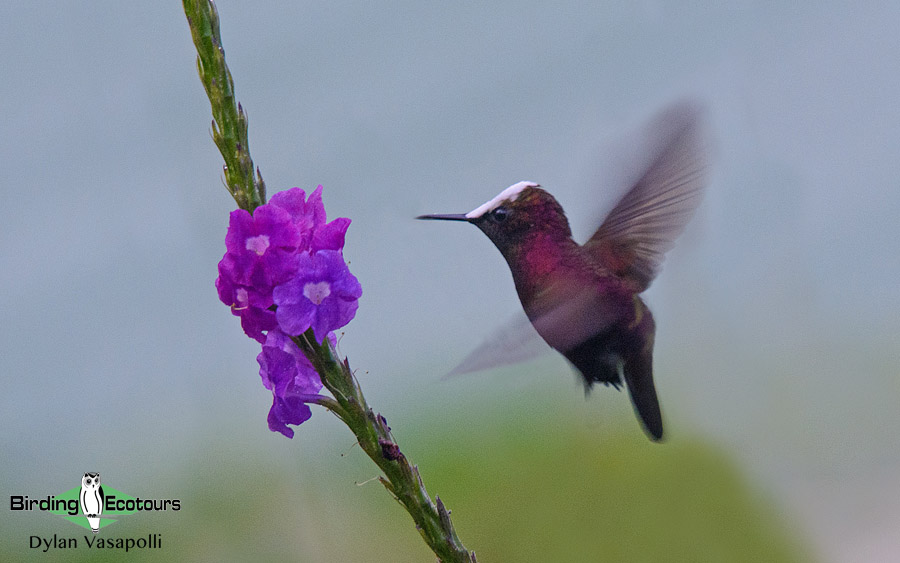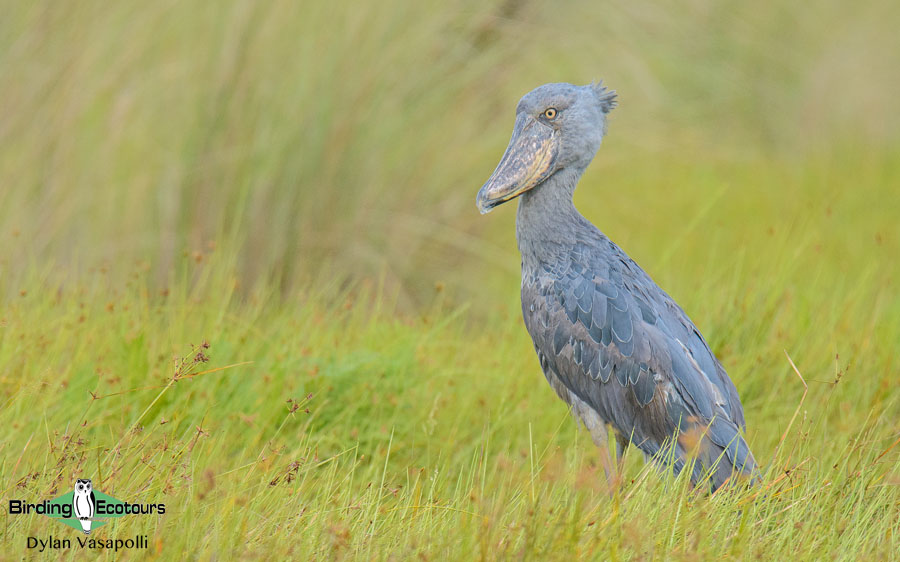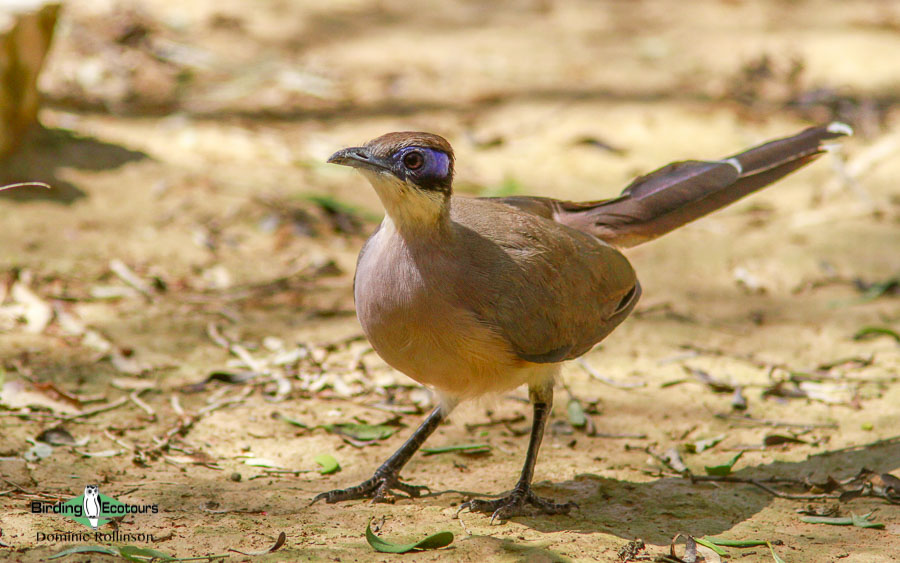Go to All Blogs | Bird Conservation Blogs | All our Birding Tours
Birdwatching tourism (or avitourism as it is sometimes called) has become a large industry and is the biggest niche within eco-tourism. The amount that wildlife watchers (primarily bird watchers) spend annually, in the US alone, is about the same as the entire GDP of Costa Rica, according to a United States Fish and Wildlife survey! And in Scotland, 4 % of jobs are associated with wildlife tourism, says the Royal Society for the Protection of Birds (RSPB). RSPB membership continued to grow strongly through the recession of 2008-2010, one of the many testaments to the growing popularity of birding.
In poor countries such as Guyana, the bird tour industry has been actively developed, by organizations including USAID, as an important alternative to less environmentally friendly economic ventures such as logging. And there are many proven success stories: countries such as Botswana and Costa Rica are famous for their nature tourism, which is an important part of their economies, providing lots of jobs. The many thousands of people who earn their livings through ecotourism obviously all want to see their livelihood being conserved, thus increasing the chance that more of the world’s biodiversity will in fact be protected for generations to come. Recent research published in the journal Environmental Conservation by Duan Biggs, a Birding Ecotours associate, shows how tour operators play an important role in conservation, while contributing to the local economy and enjoying a healthy lifestyle close to nature.
 Costa Rica boasts a mass of spectacular hummers, tanagers, trogons and of course Resplendent Quetzal – this biodiversity provides thousands of people with jobs through tourism (photo of Snowcap).
Costa Rica boasts a mass of spectacular hummers, tanagers, trogons and of course Resplendent Quetzal – this biodiversity provides thousands of people with jobs through tourism (photo of Snowcap).
According to Birding magazine, half a million copies of the Sibley guide to North American birds were sold between 2000 and 2002. And in the UK, the RSPB has over a million members. Bird-finding has become an amazingly popular hobby! It’s not surprising, then, that a large industry around worldwide birding tours has developed – every month, hundreds of birdwatchers join tours with the sole purpose of ticking birds and increasing their world life-lists. Some birding tour participants are hardcore twitchers aiming to find 7000 or even more species in their lives. Others join birding tours as an excuse to see the world – birdwatching tours certainly are a way of seeing all sides of a country, as they go off the beaten track to all corners of a particular country to find the birds of every habitat. Bird tours vary greatly to cater to a wide range of needs within the industry: some tours are designed to focus on finding all the endemic birds of a given country, whereas others are aimed at seeing good numbers of birds along with other charismatic wildlife like gorillas and chimpanzees in Uganda or Gabon, Africa’s big cats in Namibia, or the host of amazing animals and birds of Brazil’s Pantanal.
So, there are tens of thousands of people joining commercial birding tours annually, to all corners of this vast planet, from the Arctic to the Amazon. How does this impact those countries? Consider a birding tour to a very poor country such as Madagascar. A single birding tour with say 8 paying participants, contributes a great deal of income to a host of people on the ground. The lion’s share of the per person tour price of say $4,000 per person x 8 people = $32,000 stays in Madagascar and gets paid to the local guides, site guides, lodges specifically aimed at birders (and other wildlife enthusiasts), and local restaurants. Multiply this by the great many birding tours to Madagascar each year, and it has to be very significant income for a great many people who would otherwise be unemployed. Many of the national park guides are, for example, ex-hunters who now make a living by showing people birds, instead of killing them. And the lodges in the best birding areas support a network of staff from chefs to cleaning staff, often in rural areas (where the birds tend to be!) which have few other options for employment.

A smaller percentage of the birding tour price goes to guiding fees for international birding tour leaders and company profits which in turn are used for advertising in birding and environmental magazines and websites, paying office staff, etc. Advertising in African Birdlife magazine, for example, is money that is ultimately used to conserve South African and African birds, as the magazine is owned by the NGO Birdlife South Africa. And, some companies donate to bird conservation and to community development in low income rural areas. Birding Ecotours strictly donates a minimum of 10 % of its annual profits to conservation-related projects such as bird training courses in Ethiopia (taught by Yilma Abebe), conservation research on rare owls in South Africa (e.g. by Adri Barkhuysen), Oriental/Neotropical/African Bird Club projects and more. With all these funds being injected into people and organizations with serious interests in conserving their livelihood (i.e. birds and their habitats), the impact of the bird tour industry is tremendously positive for conserving birds and their habitats.
Indeed, this was the conclusion of a recent review by Duan Biggs in the International Handbook of Ecotourism, on bird-watching tourism. All in all, you can feel you’re actually helping conserve the world’s birds, by joining a birding holiday. There are, of course, some negative impacts of birding tourism. We strongly recommend that you choose a birding tour company that works to minimize these impacts. One of the main ones is the carbon footprint – flying around the world to see as many of the world’s birds as possible might contribute greatly to local communities making a living from birds, but it does of course contribute to global climate change. Therefore, try to choose a company that offsets its carbon footprint. Then, with the burgeoning number of people touring the world looking for birds, individual birds, as well as entire species, might be disturbed if the birding tour company in question does not control the way in which the birds are observed. Some companies have rules for preventing undue disturbance to birds, and some operators brief their tour leaders to draw the line at an appropriate place so that birds are not approached too closely or chased off the nest (it’s an awful thing to note that this kind of thing does in fact happen).
Talking about Madagascar again, local guides sometimes literally herd birds towards the tour participants – after 20 tours in the same season, this must become pretty stressful for some birds – the same individual Long-tailed Ground-roller, for example, might be herded more than once in a single day. A responsible company will also use playback only when necessary to see the bird: first trying to see the bird without playback, then only calling it in once (after tour participants have gathered around). Species such as Long-whiskered Owlet in Peru, one of the birds we as a company seek every year, might be seriously harmed if every birding tour group tries to call it in more than once! In summary, birding tourism unavoidably has a massive positive effect on environmental conservation, directly supporting the myriad people dependent on it for a living. And, if you choose carefully, you can maximize this positive impact. While there are possible negative effects, these can be minimized by choosing the operator carefully, and thinking first about the birds’ welfare.

